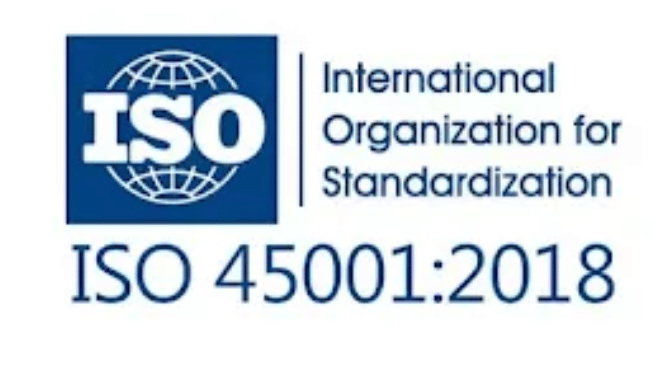Introduction
In this competitive business environment, organizations are always on the lookout for the means of becoming unique from others and ruling the market over their competitors. For Nepalese companies, ISO 45001 certification is a means of differentiation by the demonstration of commitment towards organizational excellence, employees' health, and safety at work. The article outlines the way ISO 45001 certification can be an instrument for Nepalese companies as a competitive force and why it is a strategic long-term investment.
What is ISO 45001 Certification?
ISO 45001 is an international standard for Occupational Health and Safety Management Systems (OHSMS). It is a system that allows organizations to identify, control, and reduce workplace hazards to provide a safe and healthy working environment for employees. ISO 45001 certification ensures that companies are committed to workplace safety and adhere to international standards.
To Nepalese firms, certification isn't only regulatory compliance; it's the demonstration of a good reputation and that of an innovative firm.
Why ISO 45001 Certification Offers an Advantage
ISO 45001 certification carries many benefits which can offer a competitive advantage for Nepalese firms:
1. Better Reputation and Trustworthiness
Certification notifies your stakeholders, investors, and customers that your organization is committed to the safety of employees while working and adhering to international standards. It enhances stakeholders' credibility and trust in your organization.
2. Access to Worldwide Markets
Global purchasers and business partners in most cases need their suppliers to be ISO 45001 certified. Obtaining certification provides Nepalese business enterprises with new markets and higher exposure at an international level.
3. Improved Employee Morality and Retention
Safe and healthy working conditions improve the job satisfaction and reduction of turn-over of employees. Happy employees work better and are committed to making the organization a success.
4. Less Costs and Liabilities
With the prevention of workplace accidents and injuries, ISO 45001 reduces costs for medical expenses, attorney's fees, and insurance premiums. This improves your bottom line and financial stability.
5. Operational Efficiency
The need for organizations to rationalize processes, identify inefficiency, and adopt best practices results in enhanced operational performance and cost reductions.
6. Legal Compliance
ISO 45001 ensures your organization conforms to Nepal's labor legislation and global standards. This minimizes the risk of legal penalties and boosts your reputation as a compliant and ethical enterprise.
Industries in Nepal That Can Benefit from ISO 45001 Certification
ISO 45001 can be applied across industries, but some of the Nepali industries will gain significantly from it:
1. Construction
Construction is a high-risk business in Nepal. Certification can aid construction companies to improve safety, reduce accidents, and get more contracts.
2. Manufacturing
Most manufacturing plants usually have heavy machinery and dangerous chemicals. ISO 45001 supports ensuring that adequate precautions are taken to protect the employees and limit risk.
3. Tourism and Hospitality
Tourism in Nepal is one of the foremost income-generating sectors of the economy. Certification can help hotels, resorts, and tour operators maintain a safe environment for their employees and visitors.
4. Healthcare
Hospitals and clinics have unique OHS issues like exposure to infectious diseases and hazardous chemicals. ISO 45001 provides a means to control these risks effectively.
5. Agriculture
Agriculture industry has a large number of employees in Nepal. ISO 45001 certification will assist in the creation of healthy habits concerning safety and decrease in work injuries in this significant sector.
Process to become ISO 45001 Certified in Nepal
Nepali companies seeking ISO 45001 certification can follow a step-by-step process:
1. Gap Analysis
Compare your existing OHS procedures with the standards needed under ISO 45001 to analyze areas of improvement.
2. Create an OHS Policy
Develop a concise and clear policy reflecting your company's commitment to workplace safety.
3. Implement an OHS Management System
Establish processes to identify hazards, assess risk, and offer controls.
4. Employee Training
Train your employees on the requirements of ISO 45001 standards and safety procedures for conformity.
5. Internal Audits
Regularly audited by yourself, or third-party, performance of your OHS management system and identify deficiencies.
6. Selecting a Certification Body
Get your external audit performed by a Nepal-accredited certifying body.
7. Nonconformity Closure
Correct all problems found during the audit to comply with ISO 45001 standards.
8. Get Certified
After satisfying all the prerequisites, your organization will be ISO 45001 certified.
Overcoming Challenges in Nepal
Though the advantages of ISO 45001 are evident, Nepalese organizations might encounter various challenges during its implementation:
1. Lack of Awareness
Most organizations are not conscious of the standard and benefits. Awareness generation through training camps and workshops is likely to check this issue.
2. Financial Constraints
Small and medium-sized enterprises (SMEs) may find the certification process costly. But the payoff in the long run is usually more than the cost.
3. Resistance to Change
There may be a resistance from the management and staff to implement the new procedures. Effective communication and training can overcome this type of resistance.
4. Complex Documentation
The certification process involves much paperwork, which can be daunting. Expert guidance can facilitate it.
Nepal's Success Stories
Several Nepalese organizations have implemented ISO 45001 with thumping success and registered appreciable success. For example, a large construction company in Kathmandu reduced incidents in the workplace by 40% within one year of being certified. Another Birgunj manufacturing company improved worker morale and productivity by implementing ISO 45001 standards.
These success stories are evidence of the revolutionary impact of ISO 45001 on workplace safety and organizational performance.
Conclusion
ISO 45001 certification is not just a matter of compliance with the law; it's an investment in the future of your company. For Nepali businesses, its implementation of this standard is a proactive means of creating safer workplaces, conforming to the law, and gaining competitive edge in the global market.
If you are prepared to drive your organization ahead, start researching ISO 45001 certification today. With careful planning, you can transform your workplace into a safer, more streamlined place for everyone. Visit https://qms.com.np/ to learn more about ISO.





Comments